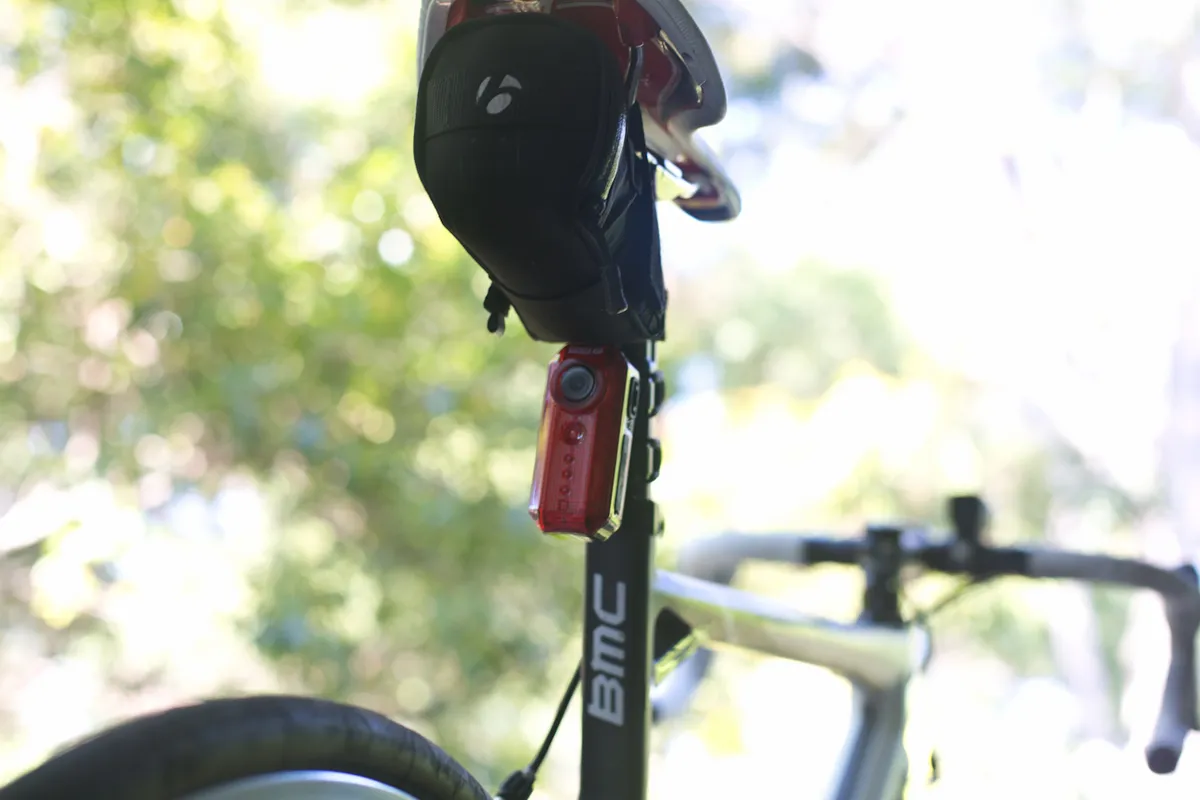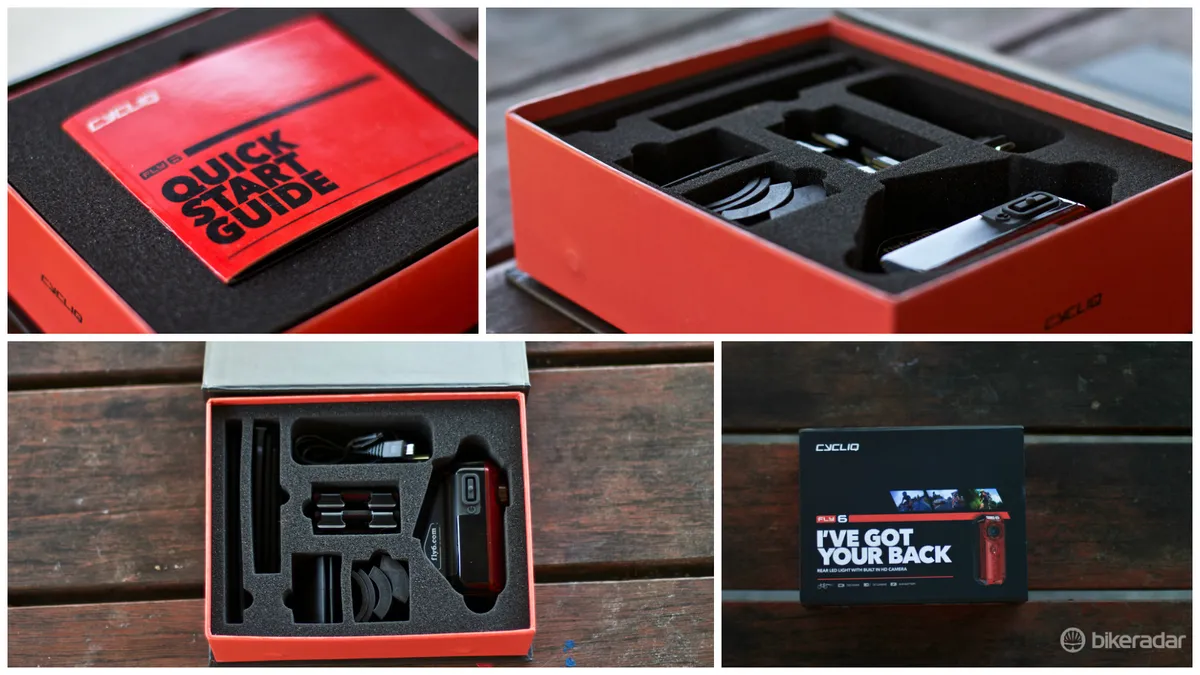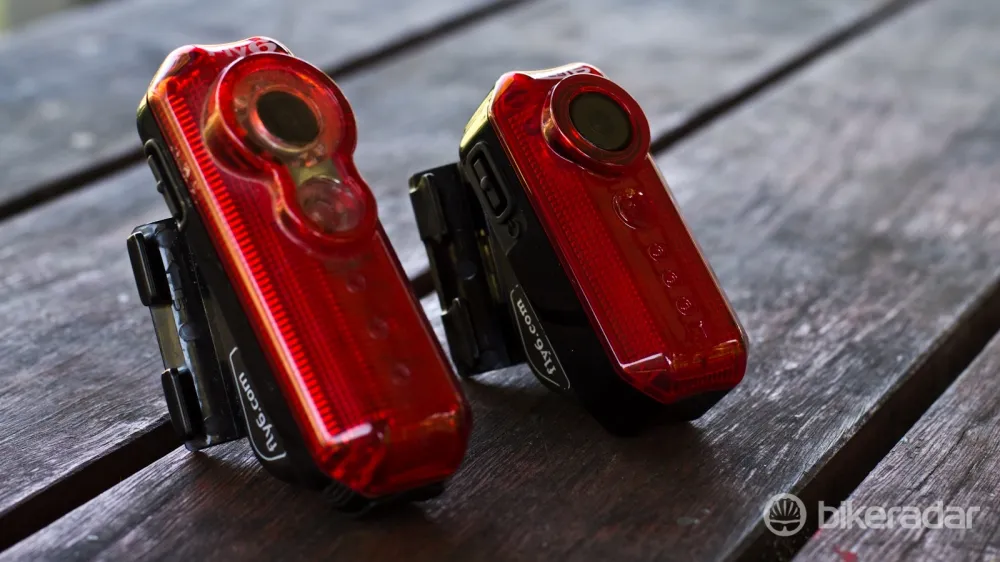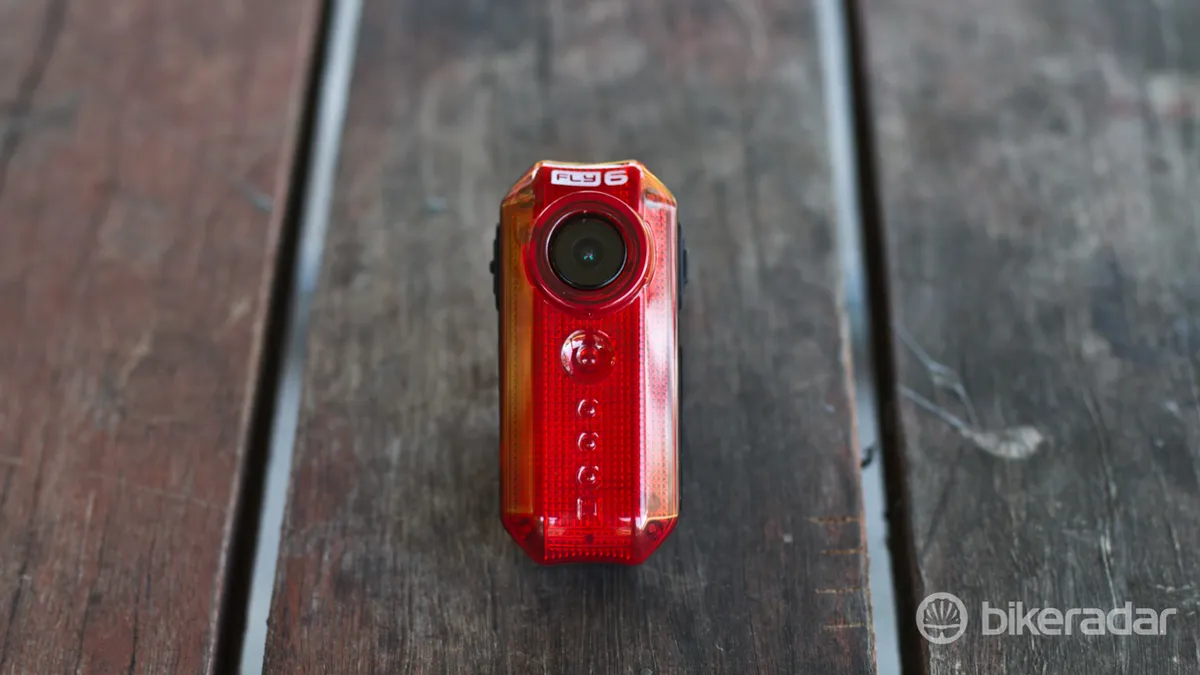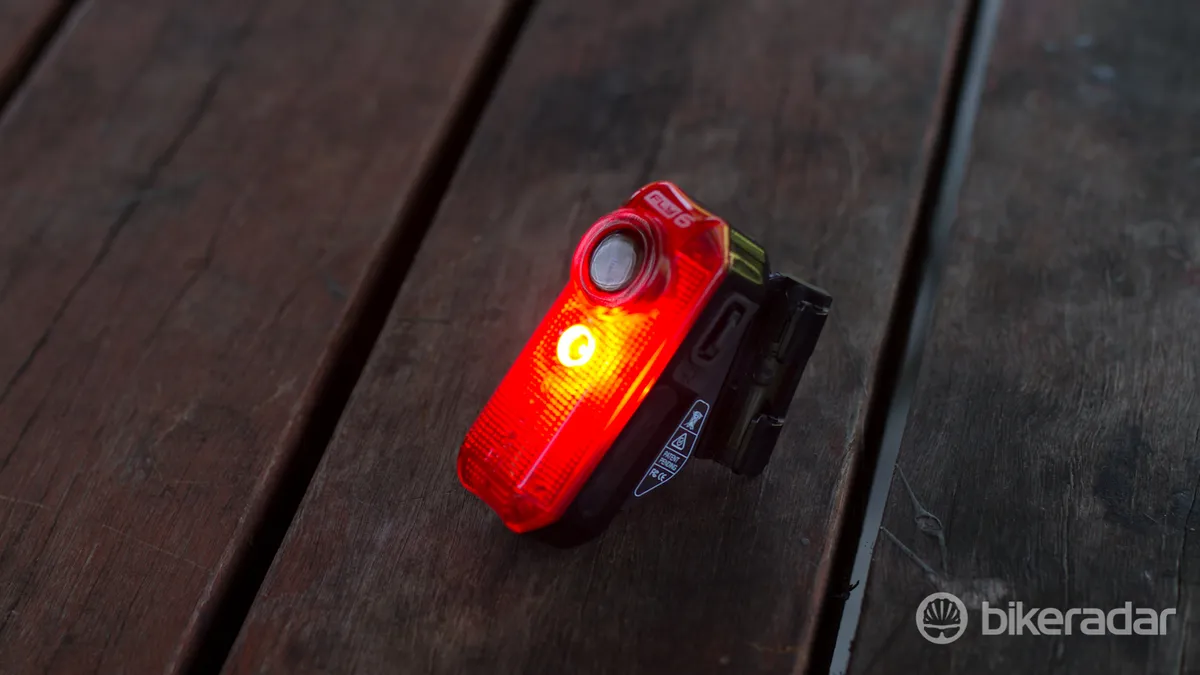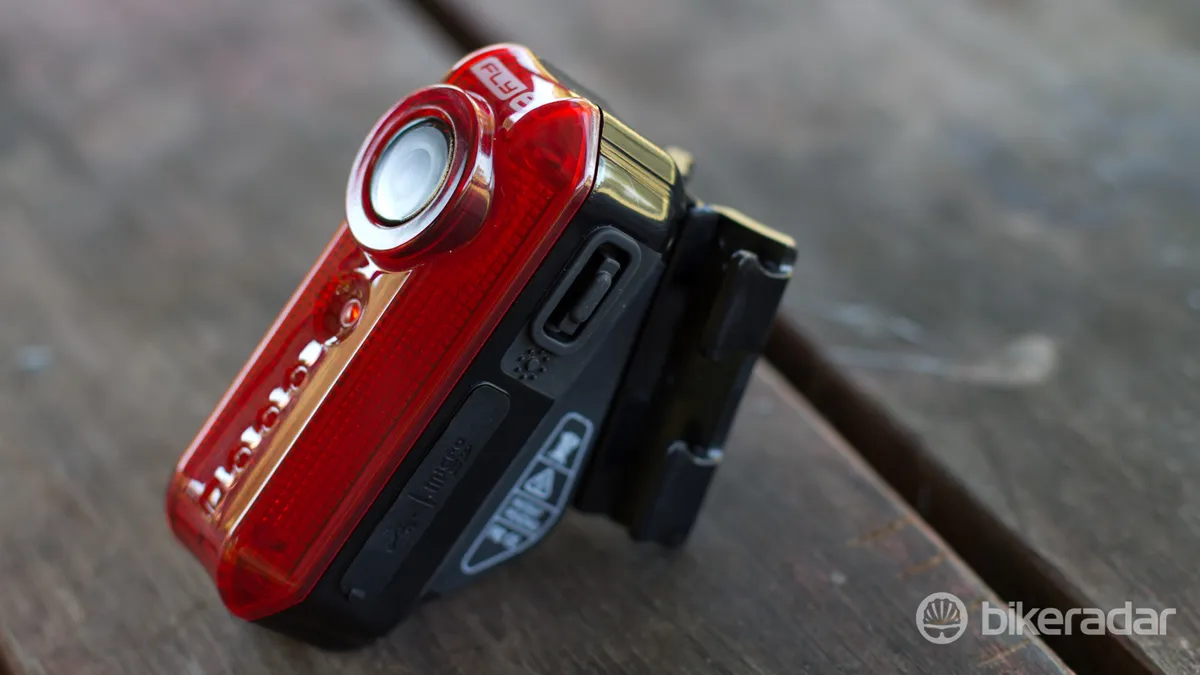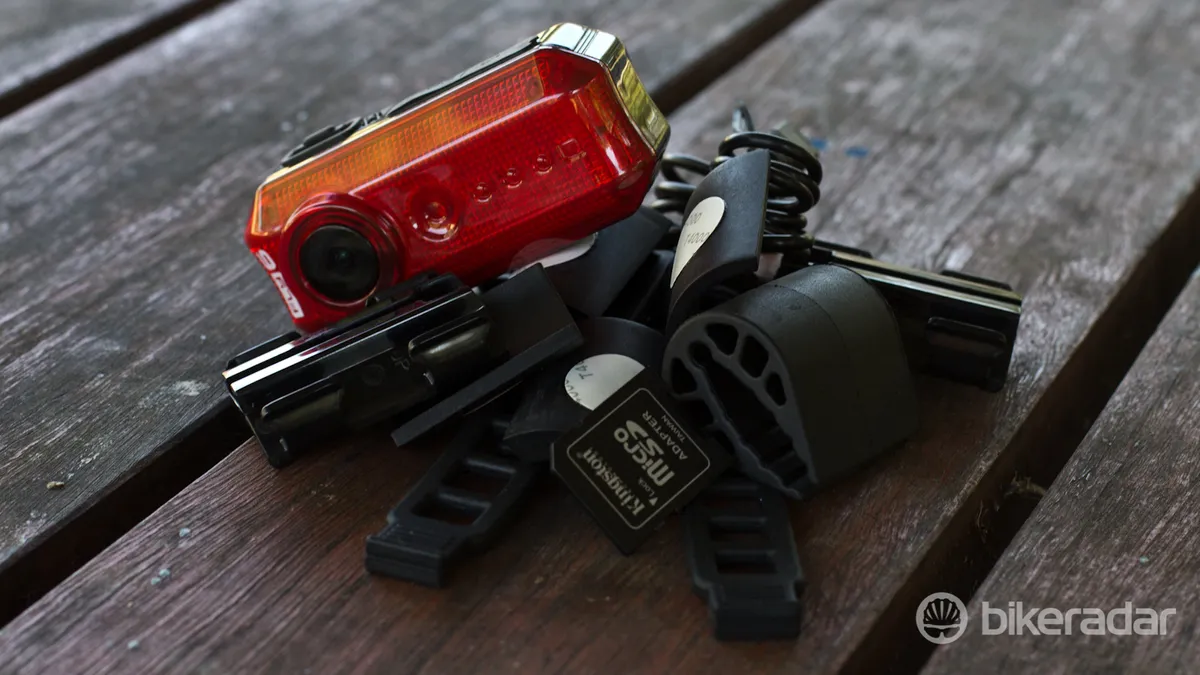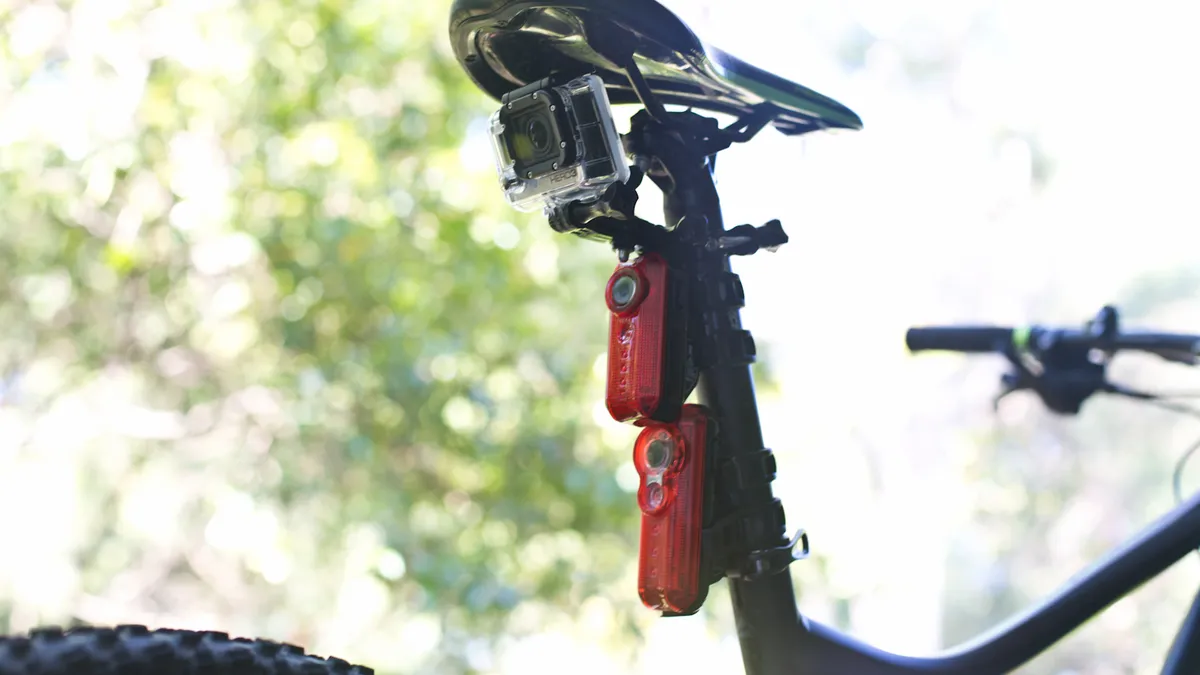The Fly6 began as a Kickstarter project just over a year ago. The combination tail light and rear view camera was the first of its kind, and it was released in Australia at a time when cyclist-driver relations were nearing an all-time low.
Shortly following its release, handfuls of videos surfaced, showing cyclists being hit by cars and being verbally abused by drivers, for no reason other than riding their bikes. This is not unique to Australia – and the riders were not always in the right – but the Fly6 shed light on a growing social problem, by enabling cyclists to document exactly what happened.
The original Fly6 was groundbreaking and deserving of an editor's choice award, but it wasn’t perfect. The unit itself was massive – 111mm tall, double the size of many other lights. Its light was also underpowered, at 15 lumens on the brightest setting. There were also problems with video distortion due to the plastic lens and the way it was bonded to the unit. Nevertheless, the original Fly6 filmed steady 720p, 30fps footage clearly enough to read license plates from afar.
The second iteration of the Fly6 offers notable improvements and addresses many of our complaints with the original. We discussed the new features previously, but we detail the key aspects below.
The features
The new Fly6 is smaller. It's 85mm tall, but weighs 116g – 7g heavier than the original. It’s still quite big though, and still takes up a good amount of seatpost.
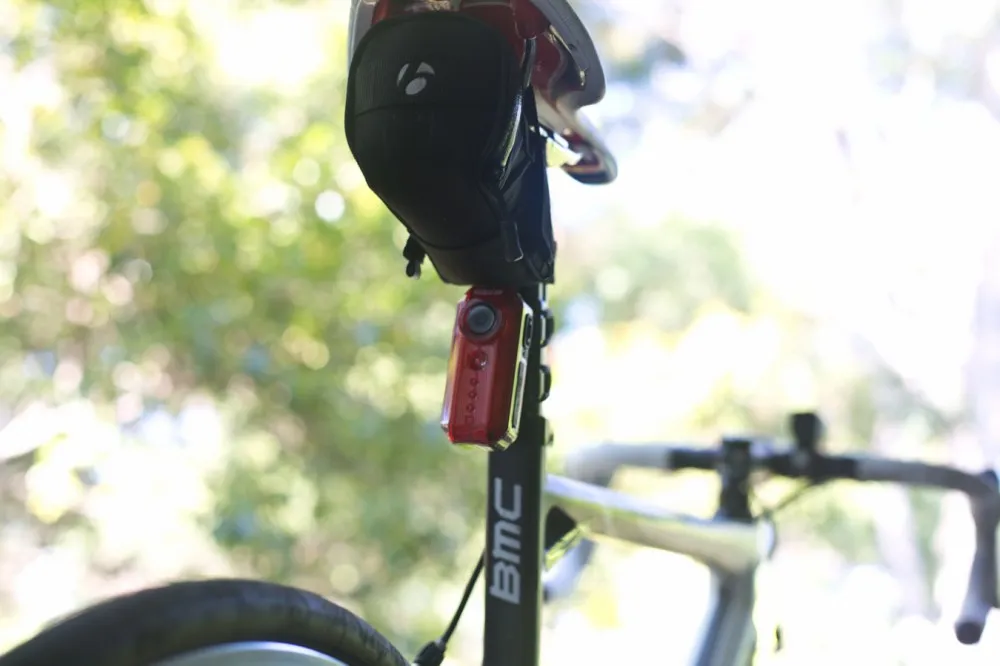
The new Fly6 still takes up a lot of seatpost, especially when used with a saddle bag, as seen on this BMC Team Machine SLR01
The light output has now doubled to 30 lumens and there are four settings, two flashing modes and one solid output mode. There's also a new memory function; the new Fly6 will remember your prefered settings between uses. The power button and flasher toggle are now labeled, and the memory card slot and charging port have been moved from the bottom to the side of the unit.
The light comes well presented in a foam-lined box with all the accessories you could need. Included are: one Fly6, five spacers (two zero-degree spacers, one five-degree spacer, one 10-degree spacer, one aero seatpost spacer), two sets of standard straps, one set of longer straps, two seatpost mounts, a mini-USB cable, an 8GB MicroSD card and an adapter for uploading.
The new unit chirps when powered up and down to communicate how much battery is remaining. Its battery life proved to be in line with the claimed six-hour run time. When the battery dips below five percent, three long beeps sound, signifying that audio and video are disabled, but the light will continue to operate for about 90 minutes.
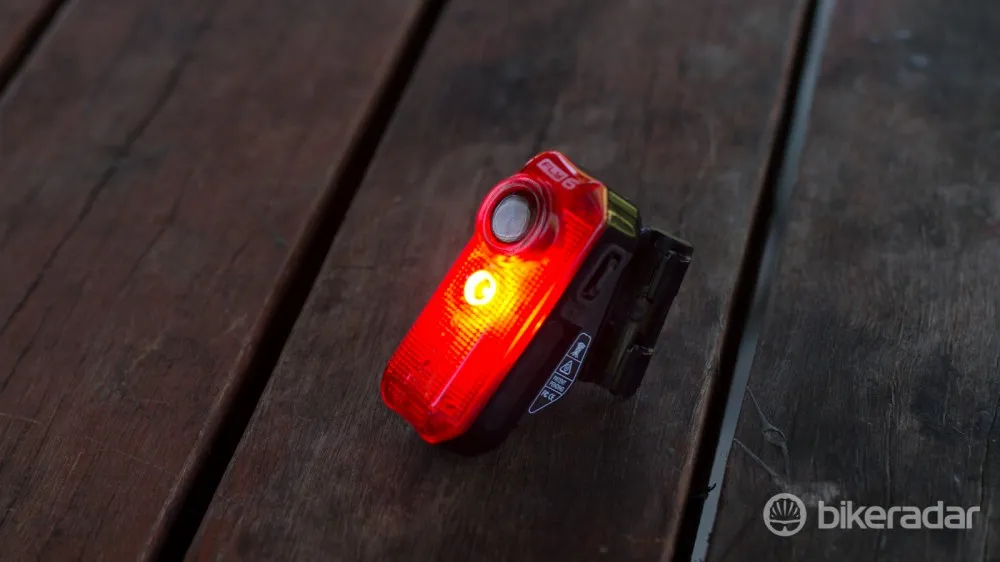
Battery life is in line with the impressive claimed six-hour run time, at the lowest light setting while recording
If tilted more than 30 degrees for five seconds, three short beeps let you know your Fly6 has entered 'Incident Capture Mode'. This means the unit will continue to record for one hour before shutting off, preventing the video looping, and preserving the footage. In an accident, this feature allows the camera to provide evidence of what happened. When you lay your bike down though, don’t forget to turn the light off and back on again before you jump back on the road.
The Fly6 has also been treated with HZ0 nano coating that makes the unit and its internals hydrophobic. After a four-and-a-half hour ride in the rain we can confidently say that the Fly6 handled the moisture better than our waterlogged tester. This same ride did reiterate an inherent weakness of the rear-facing camera – its location means it's susceptible to being covered by the grit and grime that flicks off the back wheel.
The footage
The burning questions remains, does the new Fly6 produce better video than the original? And how does it measure up as an action camera?
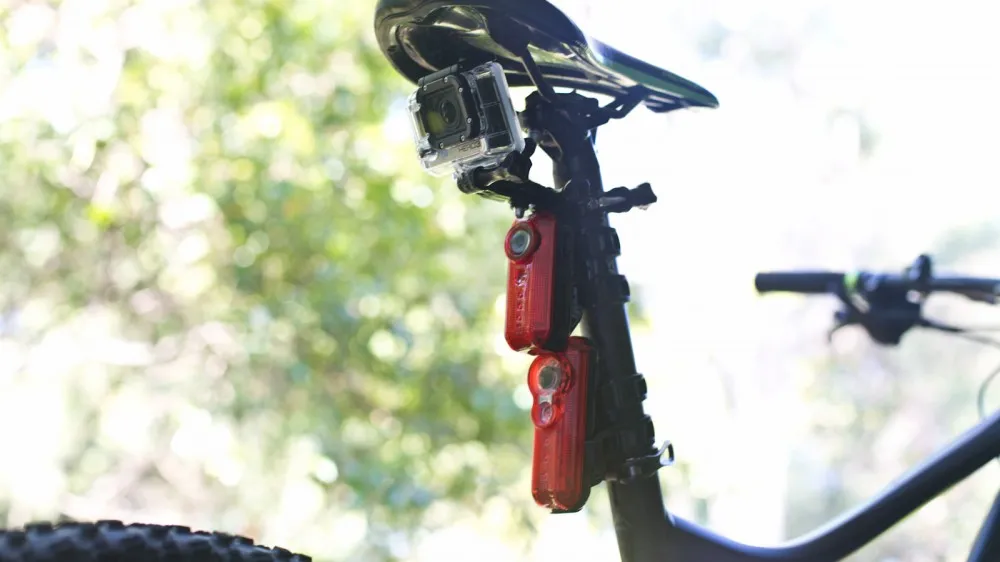
We compared footage from the new Fly6, the old Fly6 and a GoPro Hero 3 Black edition mounted to the same seatpost
Like the original, the new Fly6 records in 720p at 30fps, but has a new ultrasonically bonded lens and an upgraded sensor. Cycliq claims that this makes for sharper and crisper footage, and cites the lower-definition footage as a way to keep costs down.
The field of vision has decreased from 130 degrees to 100 degrees. While this may seem counter-intuitive, on the original Fly6, the outer edges of the footage were too fisheyed to make out much detail anyway.
To test Cycliq's claims, we pitted the new Fly6 vs old Fly6 vs GoPro Hero3 Black edition set to 720p 60fps (30fps is not an option). Check out the results below:
Nill
Video: Fly6 vs old Fly6 vs GoPro Hero3 Black edition. Note: As all three units take up a good deal of seat post, this caused the perspective of each camera to differ slightly on our test rid
The footage from the GoPro Hero3 set to 720p 60fps provided a clearer and crisper image, but, the new Fly6 offered an improvement over the original — which we compared to a GoPro Hero 3 previously.
As you can see in our video comparison, even though the original Fly6 has a wider view, the outer edges on either side are slightly fish-eyed. The footage from the new model appears flatter, and sharper throughout.
The video from the new Fly6 suffers from some of the same dark exposure, lack of dynamic range and clipping as the original, while the GoPro shows truer colours and more detail in the shadows. However, the GoPro is billed as an ‘action camera’, and is designed with filmmakers in mind – this was never the goal of the Fly6. Instead, it's advertised as a ‘safety camera', so you probably won’t be using it to film your next documentary. It's designed for reading license plates and catching your riding mates doing silly things and for this, it’s the perfect tool.
The Fly6 compresses footage into an AVI format, and the timestamped video segments are broken up into 10-minutre clips (around 650MB per clip). While this is done to help break up segments into smaller chunks, it can be slightly overwhelming and time consuming to sort through a huge list of video files in an attempt to find the 30-second clip you want. Once the 8GB MicroSD card is full, the Fly6 loops back and records over earlier footage.
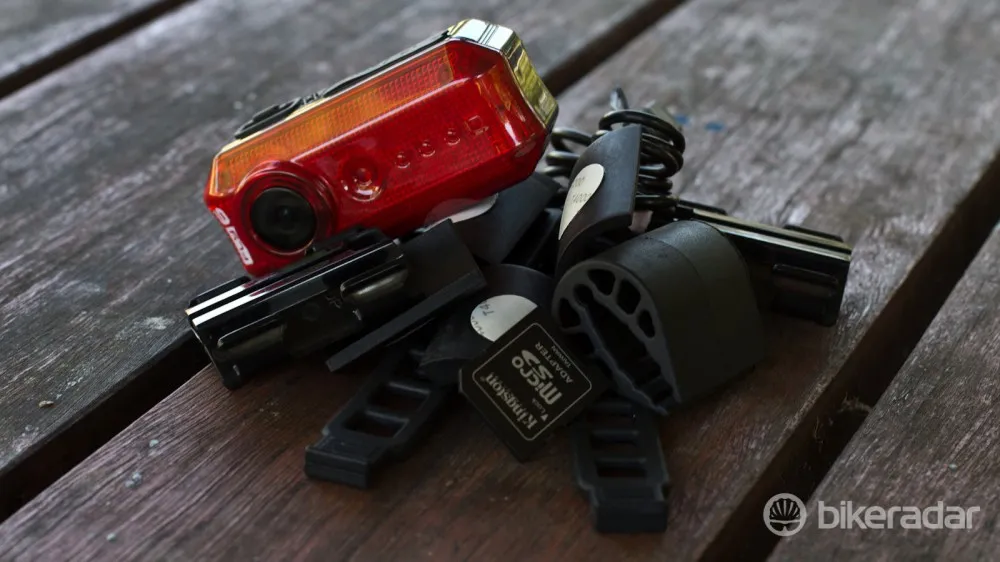
The Fly6 comes with everything you need
Overall the new Fly6 offers an improvement over the original, and with a recent price drop (April 2015), it's now price competitive to the GoPro Hero. Sure, the Fly6 doesn't shoot 1080p video like the GoPro, but it does have a rear light and includes all the accessories you'll need. Not only is the unit making you visible on the road, it is also recording your friends' best pain faces as well as aggressive drivers.
Given the amount of Fly6 footage that shows drivers endangering cyclists' lives, we have stumbled upon an unfortunate social trend. Until offending drivers can realise their actions can gravely injure or end a life, devices like the Fly6 and ICEdot are going to become more prevalent. Hopefully in time, the word will get out that drivers are being watched, and similarly, this influx of footage stresses the need for all of us to ride smart and defensively.
